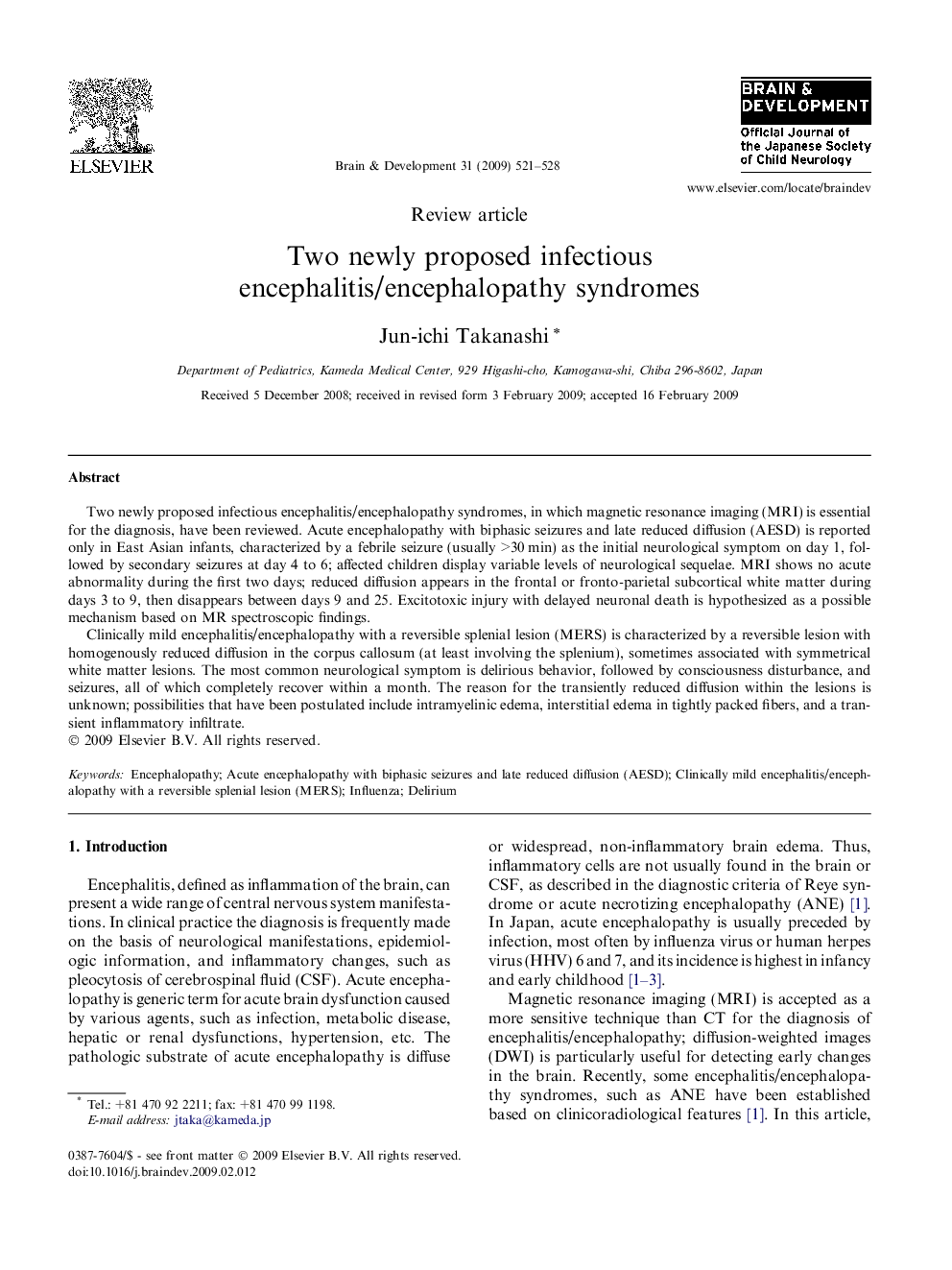| کد مقاله | کد نشریه | سال انتشار | مقاله انگلیسی | نسخه تمام متن |
|---|---|---|---|---|
| 3037863 | 1184434 | 2009 | 8 صفحه PDF | دانلود رایگان |

Two newly proposed infectious encephalitis/encephalopathy syndromes, in which magnetic resonance imaging (MRI) is essential for the diagnosis, have been reviewed. Acute encephalopathy with biphasic seizures and late reduced diffusion (AESD) is reported only in East Asian infants, characterized by a febrile seizure (usually >30 min) as the initial neurological symptom on day 1, followed by secondary seizures at day 4 to 6; affected children display variable levels of neurological sequelae. MRI shows no acute abnormality during the first two days; reduced diffusion appears in the frontal or fronto-parietal subcortical white matter during days 3 to 9, then disappears between days 9 and 25. Excitotoxic injury with delayed neuronal death is hypothesized as a possible mechanism based on MR spectroscopic findings.Clinically mild encephalitis/encephalopathy with a reversible splenial lesion (MERS) is characterized by a reversible lesion with homogenously reduced diffusion in the corpus callosum (at least involving the splenium), sometimes associated with symmetrical white matter lesions. The most common neurological symptom is delirious behavior, followed by consciousness disturbance, and seizures, all of which completely recover within a month. The reason for the transiently reduced diffusion within the lesions is unknown; possibilities that have been postulated include intramyelinic edema, interstitial edema in tightly packed fibers, and a transient inflammatory infiltrate.
Journal: Brain and Development - Volume 31, Issue 7, August 2009, Pages 521–528